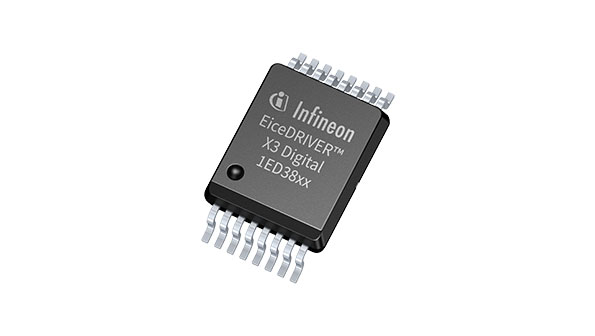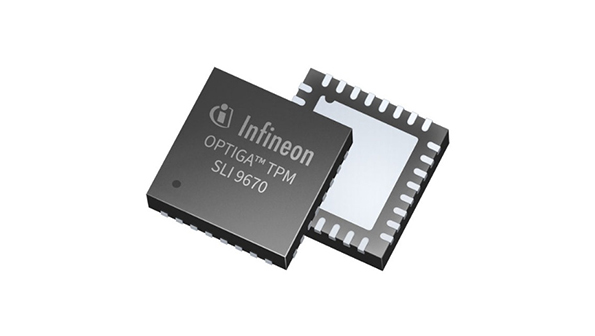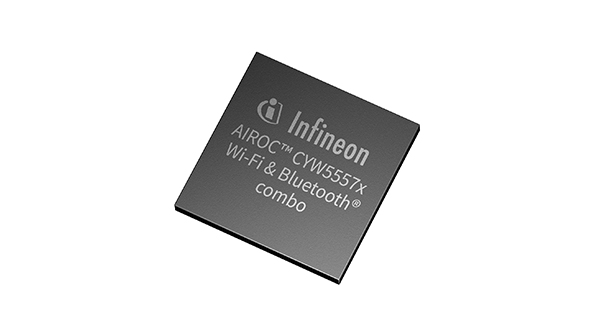DC EV charging
Efficient and scalable design systems for DC charging from home to highway and beyond
The goal of high-power chargers is to reduce charging time, making electric vehicles comparable to combustion engine cars. Designing these chargers involves considerations like reliability, efficiency, cost, secure data and communication. Infineon provides the most comprehensive portfolio, allowing for optimal product and technology selection for every aspect of EV charger design with our combined system solutions.
System diagram: DC EV charging
Electric cars are progressing toward becoming widely available in many countries. According to the International Energy Agency (IEA), electric car sales grew by about 25% in the first quarter of 2024 compared to the same period in 2023. To maintain this growth, it is crucial to make owning an EV as convenient as owning a traditional car, which is where high-power DC charging comes in.
EV owners now include more than just city-dwellers or short-distance commuters, highlighting the need for widespread charging options. High-power DC chargers provide fast-charging opportunities on highways, while smaller chargers are ideal for daily urban use.
Additionally, DC charging technology offers bidirectional power transfer, enabling uses like power backup, household buffering, and future V2G (vehicle-to-grid) capabilities. Source: International Energy Agency (IEA) https://www.iea.org/reports/global-ev-outlook-2024/executive-summary
When choosing the ideal power semiconductor, it is important to know the charger’s power level. Ultimately, the selection of suitable devices depends on this factor. Fast chargers are commonly built with power subunits using Infineon’s IGBTs, CoolSiC™ MOSFETs, and diode power modules, such as the CoolSiC™ Easy Module, IGBT EconoPACK™, and the IGBT EconoDUAL™ family. With these subints chargers with higher power ranges are built by stacking the subunits to the desired output power.
Our high-quality portfolio of power switches works seamlessly with our broad range of drivers. All switches need a driver, and all drivers need to be controlled. That is why we also offer the best-fit EiceDRIVER™, as well as XMC™ and AURIX™ microcontrollers for your fast EV charging designs. Infineon’s AIROC™ Wi-Fi and combos portfolio integrates Wi-Fi and Bluetooth® in a single-chip solution. For converter management, our high-precision coreless current sensors offer the ideal solution for converter control and diagnosis. And finally, our line of OPTIGA™ products ensures data protection and security for the charging station.
Encouraging drivers to make EVs their primary means of transportation relies heavily on finding ways to extend their range. While carmakers work on more efficient batteries, equally important is building up a powerful, convenient, and accessible charging infrastructure. This need for more range and reliable infrastructure translates to greater demand for more power as fast as possible.
High-power DC charging systems allow drivers to add 200 km to their battery in about seven minutes–just enough time to have a cup of coffee on the way to their final destination. The technology that makes these chargers fast, efficient, and accessible will help eliminate “range anxiety” among drivers and further encourage EV adoption around the world.
CoolSiC™ for next level energy efficiency
CoolSiC™ technology reduces the charging time with the same charging station and footprint. A single 1200 V SiC MOSFET is sufficient to support a DC-link voltage of 800 V. Doubling power density allows a component count reduction of a comparable Si solution by 50% thanks to doubled voltage in the switch positions. Due to 50% lower conduction and switching losses from lower Coss the overall efficiency can be increased which lowers the cooling effort.
Podcast4Engineers: Vision for eMobility: 10 kWh for 100 km
How do semiconductors ensure electric vehicles are efficient and fun to drive at the same time?
Listen to our newest Podcast4Engineers episode and join our experts Dirk and Christoph discuss how semiconductors not only enable #decarbonization in eMobility, but also ensure the “fun-to-drive” factor.
Podcast4Engineers: Fast EV charging
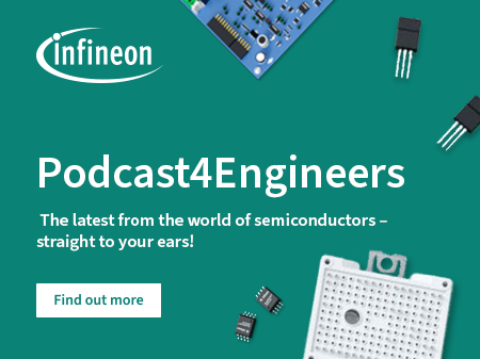
Today, a DC charger with 150 kW can put a 200 km charge on an EV in around just 15 minutes. As fast charging and battery technologies continue to evolve and improve in the near future, experts anticipate the charging time to drop even further. Listen to our Podcast4Engineers episodes as our Infineon experts discuss the latest trends and challenges in EV charging and how our one-stop product and design portfolio can help design energy-efficient DC EV chargers today.
Webinars
Driving decarbonization and digitalization together is crucial and the IGBT7 technology plays a major role along this entire energy chain. This training video will introduce the discrete TRENCHSTOP™ IGBT7 family and share its five decisive values and the application positioning.
Introduction to 2EP1xxR EiceDRIVER™ power - Module 2
In the technical introduction training, you became familiar with the full-bridge transformer driver family 2EP, which is a reliable power supply that supports Infineon’s top-notch switches and isolated gate drivers. By the end of this deep dive, you will be able to describe the working principle of this family and know about possible applications by understanding the effect of input voltage changes, transformer transfer ratio, and duty cycle changes on the isolated output voltage.
Introduction to 2EP1xxR EiceDRIVER™ Power - Part 1
This video will introduce you to the 2EP EiceDRIVER™ power family, along with its features and advantages. Additionally, you will have an overview of the extensive application scope of the 2EP.
As electro mobility increasingly becomes part of our daily lives, the need for more efficient charging solutions is growing. With an eye on the requirements and technological developments in this field, the challenge is to respond with smart and compact power conversion solutions for the charging networks of today and tomorrow. In this webinar, you will gain deeper insights, into Infineon's comprehensive DC-EV charging portfolio with a focus on silicon carbide and its important contribution to ultra-fast EV charging.
Today's global challenges of decarbonization, combined with rising energy demand, make bi-directional electric vehicle charging and how semiconductor solutions support this application more important than ever. In this webinar you will get an overview of the power conversion topologies for bi-directional DC charging and take a closer look at an application example based on Infineon's 50 kW Reference Design.
The training overviews the different types of chargers with focus on AC EV charging and its functionality, it also positions products from Infineon for the AC chargers with focus on control, connectivity and security. The training shows block diagrams of the difference solutions.
The training overviews the different types of chargers with focus on DC EV charging and its functionality, it also positions products from Infineon for the DC chargers with focus on control, connectivity and security. The training shows block diagrams of the difference solutions.
Online Courses
Main Inverter CoolSiC kit introduction video
In depth introduction of Infineon's one stop shop reference design for EV traction Inverter.
Getting started with the EiceDRIVER™ X3 digital evaluation board

- Understand Infineon’s purpose in delivering quality above and beyond the standard and find out how we execute that standard in development, qualification, manufacturing and testing
- Learn where and how this high-quality standard is reflected and discover our success stories
CoolSiC™ MOSFET in an EV charging application
With the growing market of electrical vehicles, the industry has put forward more requirements for the performance of charging piles. This e-learning will show you that the emergence of CoolSiC™ MOSFETs has improved the charging pile industry to make the EV charger smaller, faster and with higher efficiency.
#ew23 - Tech Talks - 3. Next-generation eMobility.mp4
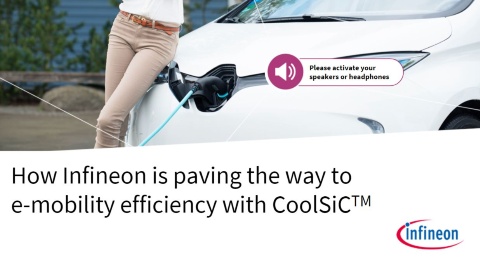
- Distinguish the features and benefits of Infineon’s CoolSiC™ solutions in target applications and identify Infineon’s fully scalable CoolSiC™ portfolio to meet this automotive market transition
- Explain the reasons for the increasing introduction of silicon carbide technology in the automotive applications
Standards for wireless charging
This training covers the harmonized frame of standards from international bodies like ISO, IEC, SAE and UL dedicated to the Wireless Power Transfer system technologies.
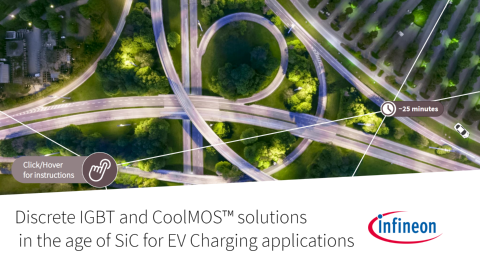
In this online course you will learn about cost-optimized, but highly efficient electric vehicles charging solutions based on IGBT and CoolMOS™, and explore Infineon’s wide portfolio that supports every segment of the EV charging application.

This training covers the most relevant standards for high power charger design, grouped into 4 major areas:
• charging topology
• communication
• accessories
• safety and security
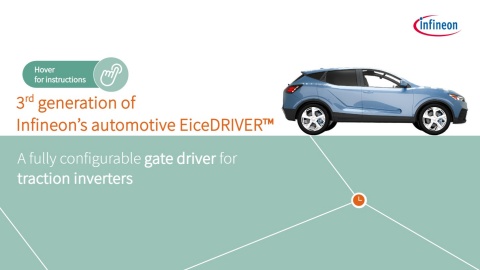
- The training covers detailed information about Infineon's 3rd generation automotive EiceDRIVER™ 1EDI305xAS
- Participants will learn how these products help to reduce switching losses and improve thermal efficiency, resulting in longer range for hybrid and electric vehicles
EiceDRIVER™ isolated gate driver family overview
Every switch needs a driver, and the right driver makes a difference.
Infineon offers different isoalted gate driver families, such as the EiceDRIVER™ Compact and the EiceDRIVER™ Enhanced. Each family has different features to protect the switch and application.
The EiceDRIVER™ isolated gate driver offers advanced features such as reinforced isolation, Miller clamp, slew rate control and short circuit protection to protect the switch and application. It also enables condition monitoring and rapid prototyping.
The EiceDRIVER™ is the perfect fit for industrial application, particular in combination with Infineon CoolSiC™ and IGBT switches.
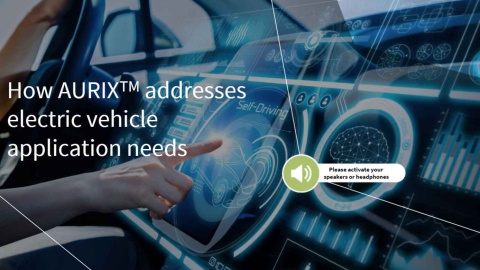
Training topics:
- Get to know how AURIXTM is able to answer the needs of the electric vehicle market
- Recognize and explore how AURIX™ TC3xx addresses key electric vehicle challenges, and understand the main features of the AURIX™ TC3xx microcontroller
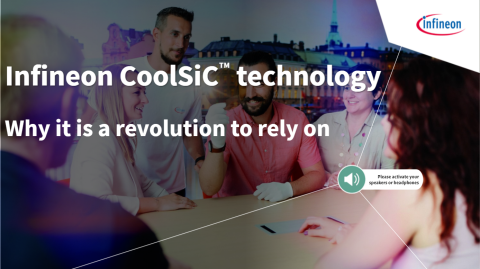
In this training you will:
- Be familiar with silicon carbide MOSFET structures and their characteristics
- Get to know Infineon's CoolSiC™ MOSFET, its features, its improvements over a typical trench MOS and how it performs against its competitors
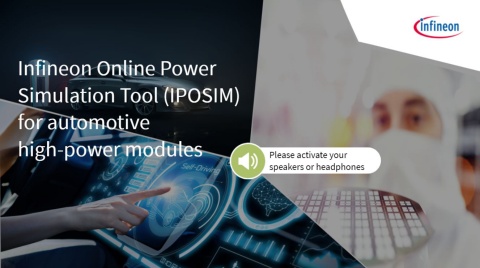
In this training you will:
- Get to know Infineon’s IPOSIM tool, specifically for an automotive electric vehicle inverter
- Discover the steps involved in simulating different parameters and comparing the results of different Infineon products to see which is the best fit for your application
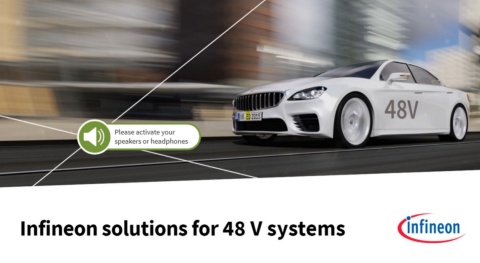
In this training you will:
- Learn about the transition from fule injection combustion engine to full battery electric vehicles and the main 48V powered applications.
- Additionally get an overview about Infineon’s comprehensive MOSFET portfolio for 48 V applications and their support material
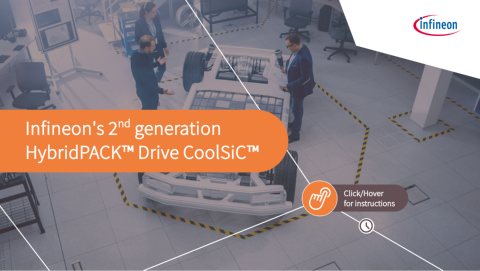
- Infineon's HybridPACK™ Drive silicon carbide compact power modules cater to the increasing demand for high range, efficiency, and power in electrified vehicles, enabling longer drive range, compact size, and optimized system cost.
- The second generation of Infineon's HybridPACK™ Drive, utilizing CoolSiC™ technology, offers a scalable product family with enhanced features and package improvements, providing added value to customers.
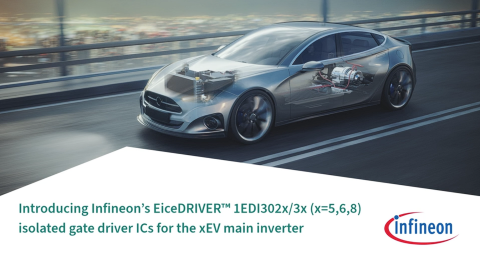
- Describe the key features and benefits of Infineon's EiceDRIVER™ isolated gate driver family and explain why it is suitable for the xEV main inverter
- List the target applications of the EiceDRIVER™ gate driver family and recall the reference designs available


